The history of personal knowledge management (PKM) is a history of curiosity. For thousands of years, people have accumulated knowledge in a desperate attempt to find no-nonsense answers to nagging questions.
- “What is the universe made of?”
- “What makes us human?”
- “What is the meaning of life?”
- “Isn’t he a little short for a stormtrooper?”
Ok. Let’s get serious for a moment.
In today’s article, we take a closer look at the concept of personal knowledge management (PKM). You’ll learn how to build a knowledge management system, gather information effectively, and succeed in the knowledge economy (and your personal life).
💡 Before you start… This article is part of our series on knowledge management. Check other guides on the blog when you’re done reading.
- 🗃 Niklas Luhmann’s Zettelkasten Method
- 🗑 The Curse of Tsundoku (積ん読): How to Beat Digital Hoarding
- 🧠 How To Build a Digital Second Brain
- 🐑 Past, Present, and Future of Outlining Software
- 🤖 Building a Second Brain with AI
🧠 What is a personal knowledge management system?
“Any Fool Can Know, The Point is to Understand.“
Defining Personal Knowledge Management (PKM)
Personal knowledge management is a life-long investment of time and effort into capturing and organizing information. That can include the things you experience, read about, and listen to. It’s a premeditated and systematic collection of information.
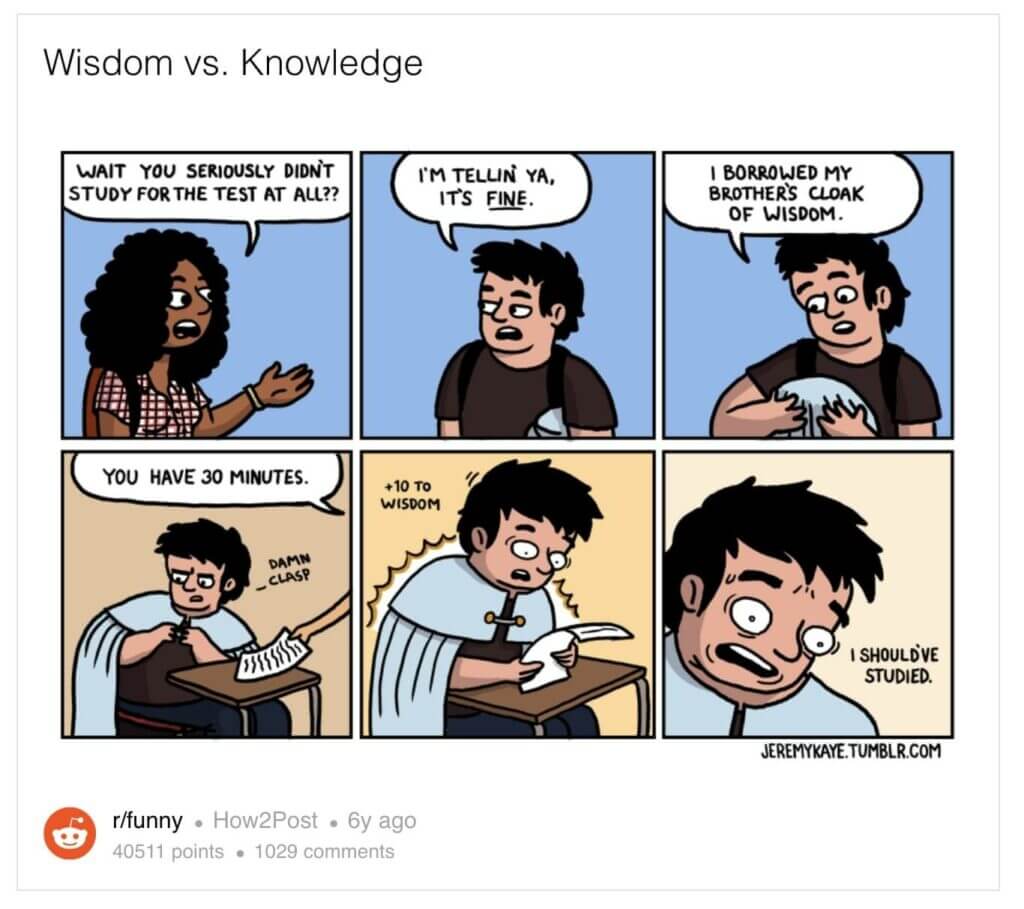
Following the Wikipedia definition of PKM:
“Personal knowledge management (PKM) is a process of collecting information that a person uses to gather, classify, store, search, retrieve and share knowledge in their daily activities (Grundspenkis 2007) and the way in which these processes support work activities (Wright 2005) […]”(1)
You can think of personal knowledge management as a more strategic approach to writing things down in a notebook. Instead of scribbling observations at random, you wedge new bits of information inside a deliberate, pre-defined personal knowledge management system.
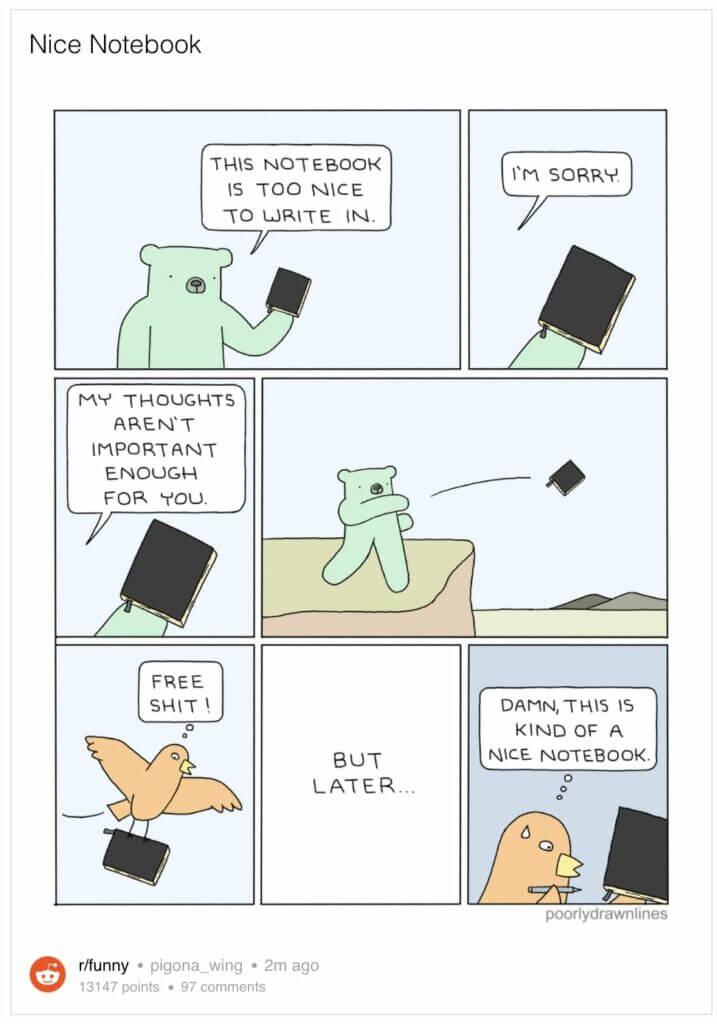
Professor Paul A. Dorsey argues that personal knowledge management is a combination of traits and tools for the effective handling and processing of knowledge.
“Personal Knowledge Management should be viewed as a set of problem-solving skills that have both a logical or conceptual as well as physical or hands-on component. These are skills that will be required for successful knowledge work in the twenty-first century.“
“What is PKM?”, Professor Paul A. Dorsey(2)
Dorsey breaks PKM down into seven fundamental skills or steps:
- 📥 Retrieving information
- ⚖️ Evaluating/assessing information
- 🗃 Organizing information
- 🔎 Analyzing information
- 👁 Presenting information
- 💾 Securing information
- 📝 Collaborating around information
By applying this workflow in your intellectual pursuits, you can effectively manage personal knowledge using any permanent medium. That can include plain-text editors, outliners like Emacs to take digital notes, ordinary notebooks, or a bullet journal.
“But where did it all start?” 🤔
🥚 A Bit of Knowledge Management History
– “Do you know what happens to lads who ask too many questions?”
Terry Pratchett, Mort
– “No,” he said eventually, “what?”
– “Damned if I know. Probably they get answers, and serve ’em right.”
One of the oldest examples of PKM is the commonplace book, a written account of observations, quotations, and passages from influential works for contemplation.
“In the most general sense, a commonplace book contains a collection of significant or well-known passages that have been copied and organized in some way, often under topical or thematic headings, in order to serve as a memory aid or reference for the compiler […]”
”Commonplace Books,” Harvard University Library(3)
Roman emperor and philosopher Marcus Aurelius kept a commonplace book where he documented thoughts, quotes, and spiritual exercises that’d later become Meditations.

Some commonplace books—or as Professor Alan Jacobs calls them “the Tumblrs of an earlier era”—contained sermons and practical daily tips. Others were used to “gather a collection of the wisest statements, usually of the ancients, for future meditation.”(4)

Lewis Carroll’s commonplace book containing sketches of labyrinths and ciphers(5)
When we’re on the subject of note-taking, many of history’s greatest minds took detailed notes of their intellectual pursuits. Leonardo DaVinci would record scientific observations and detailed sketches of his paintings and machinery design.

One of the most famous knowledge management systems is Zettelkasten created by German sociologist Niklas Luhmann. Luhmann used small index cards filed into boxes—the archive contained over 90,000 cards—to aid his academic research.

Niklas Luhmann’s Zettelkasten via Niklas Luhmann-Archiv(6)
The origins of modern knowledge management software can be traced to inventor Vannevar Bush. In a 1945 article “As We May Think” Bush conceptualized a device called “Memex” capable of storing books, records, and other information.

Memex, a concept of a knowledge management device by Vannevar Bush via Life (1945)
Bush’s idea inspired others like Tim Berners-Lee, the inventor of the World Wide Web, and Douglas Engelbart who pioneered remote collaboration with the historic multimedia demonstration known as The Mother of All Demos.
And the rest they say is history.
⚡️ The Benefits of Personal Knowledge Management
“Your job is to collect good ideas. The more good ideas you collect, the more you can choose from to be influenced by.”
Steal Like an Artist, Austin Kleon(7)
You Can Overcome Cognitive Challenges
Nothing in life, including knowledge, is static. You move around, meet new people, change positions, change employers, and learn new skills, particularly in such a hectic time as the pandemic.
By consciously managing personal knowledge, you’re effectively prepping yourself for professional and personal challenges coming your way.
But there’s more.
As our access to information is improving, we need better strategies to filter, process, and organize the information. A robust personal knowledge management strategy helps ingest knowledge selectively, without spiraling down a bad case of FOMO.
You (Don’t) Have to Start From Square One
We’ve mentioned Elon Musk’s “semantic tree” several times on the blog. And it couldn’t be more relevant when discussed in the context of knowledge management.
In a nutshell, attaining competency in any discipline is a multi-level process. To become a top violin or piano performer, you need to learn the scales and chords first. That is unless the ancient gods of music granted you the “gift” and you can rock Paganini’s 24 Caprices “by ear.”
The rest of us ordinary mortals are left with a bottom-up approach.
Incorporating a knowledge management system will help you build a solid foundation—or the bark of a semantic tree—for whatever you want to learn. It will also make it easier to map out the learning path and see how bits of knowledge connect in a hierarchical way.
You Flex Your Intellectual Muscles
Darwin, Franklin, Newton, Edison, and da Vinci all took detailed notes of their intellectual pursuits. Their pocket notebooks and sketchbooks were their versions of personal knowledge management apps, and this allowed them to retain information and, more importantly, further their intellectual prowess.
Whenever you learn new stuff and add it to your personal knowledge management system, you automatically have to confront new information with what you already know.
- 💭 “Does this refute or support what I already know?”
- 💭 “How is this relevant to what I’m working on?”
- 💭 “Is A more important than B? Why?”
Each time you juxtapose new and “old” knowledge, you effectively engage in metacognition or “thinking about thinking.” That, in turn, helps you develop essential 21st-century skills like critical thinking, problem-solving, and goal-setting.
🧠 Knowledge Management Systems (PKMS)
What Is a Personal Knowledge Management System (PKMS)?
Knowledge management (KM) is the process of accumulating and organizing information. A knowledge management system (KMS) is a combination of tools and strategies for doing that effectively.
A robust PKM system will help you:
- 💾 Quickly store and retrieve information.
- 🔄 Make knowledge management a habit.
- 💡 Improve problem-solving and creativity.
- 👉 Enhance your decision-making capabilities.
- ❌ Avoid making the same mistakes ad nauseam.
- 🚀 Grow your knowledge indefinitely, but also…
- 🤔 Have a more selective “information diet.”
Putting it all together, a knowledge management system lets you aggregate, organize, and retrieve information strategically using a select number of dedicated tools. The overarching purpose of knowledge management is to build a reliable single source of truth.
For instance, Niklas Luhmann’s Zettelkasten we mentioned earlier utilizes an index-based system of cards, complete with metadata, tags, cross-references, and unique identifiers. And that in itself is pretty impressive considering the analog-first nature of the system.
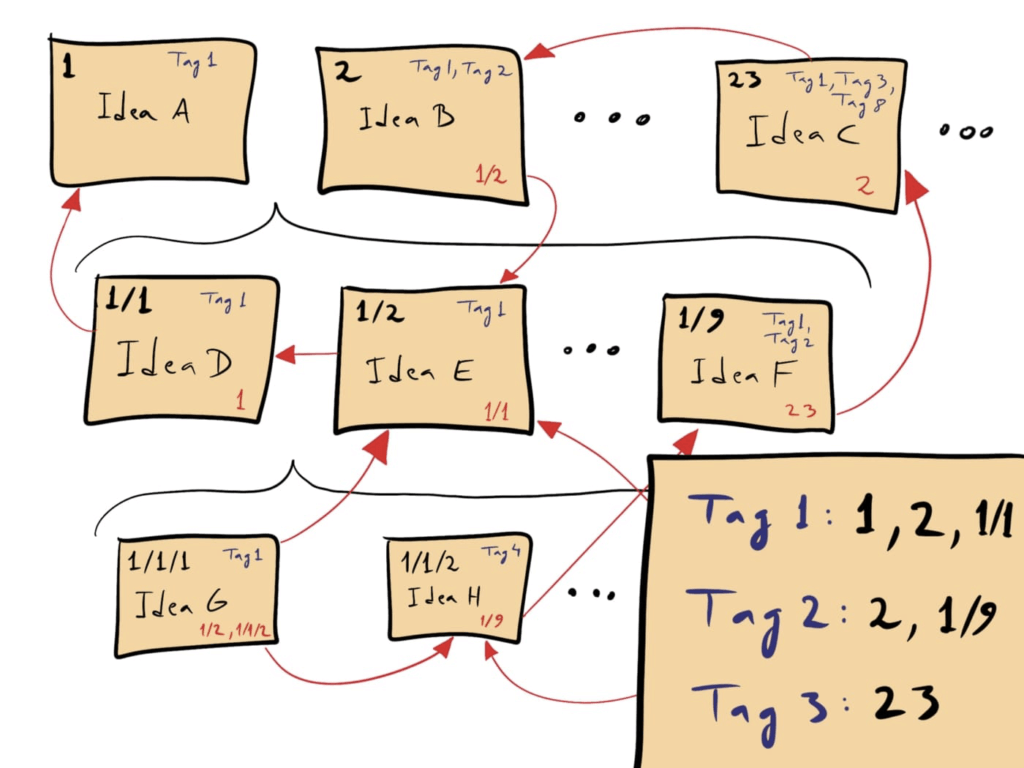
A Zettelkasten notes with tags and cross-references by David B. Clear(8)
A more modern approach to PKM systems is the Building a Second Brain (BASB) methodology by Tiago Forte. The system uses note-taking and organization tools to create a digital copy of everything you’re working on.
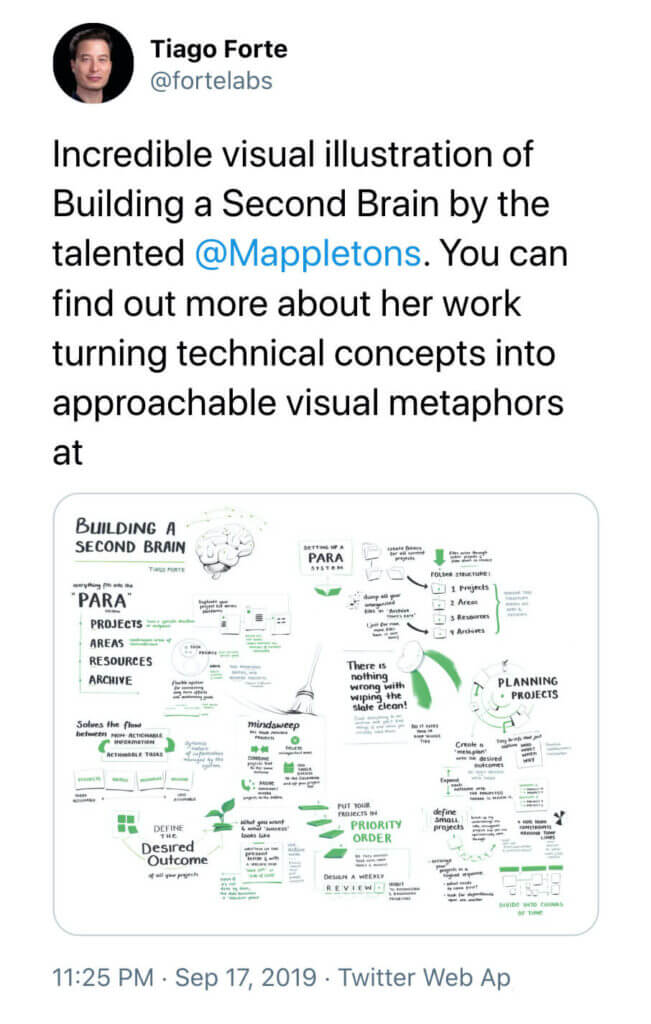
🤹♂️ How to Build a Personal Knowledge Management (PKM) System in 3 Steps
Step 1: Decide What to Learn
In teaching, cognitive overload happens when students are pressured with more reading, assignments, and study material they can process. This leads to essential information going by the wayside.
Unfortunately, due to biological and time constraints, it’s not possible to learn, store, capture, and keep track of every bit of information. That’s why selectivity is king.
Here are a few starter questions to help you decide what to add to your PKM system:
- 💭 “Does this refute or support what I already know?”
- 💭 “How is this relevant to what I’m working on?”
- 💭 “What should I do with this information?”
- 💭 “Can this become relevant to my future projects?”
- 💭 “Is the information presented objectively?”
- 💭 “What can I learn from this passage?”
- 💭 “Do I need a fragment or the whole thing?”
Ultimately, everything you add to your system should fit into an overarching hierarchical system, with peripheral concepts branching out from the root/seed idea.
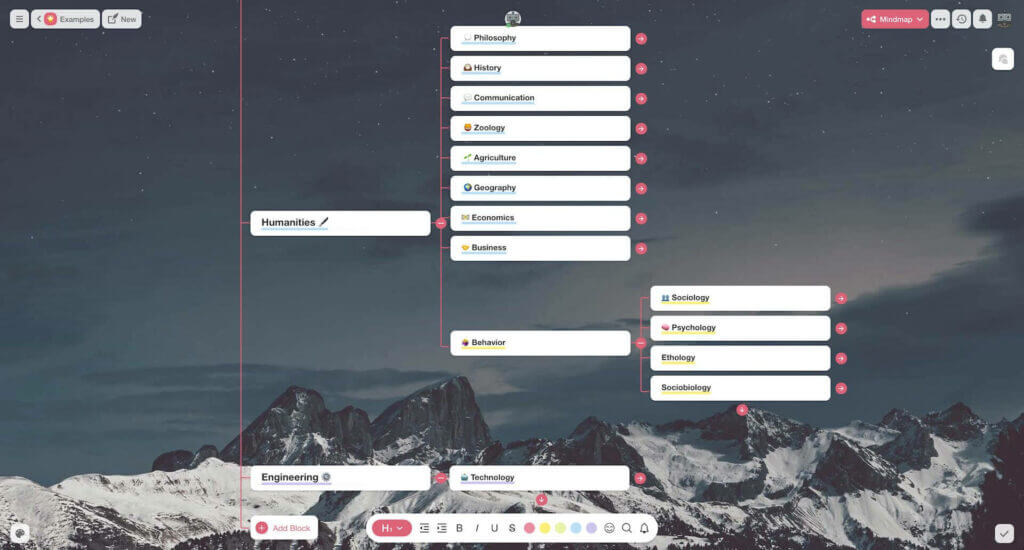
A fragment of Mortimer J. Adler’s Branches of Knowledge
visualized in Taskade’s Mindmap view
If you’re an average reader, you should definitely look into speed-reading to assimilate key facts quickly. Check this video featuring the world’s fastest reader Howard Berg for some speed-reading tips. 👇
Be sure to always juxtapose new information with the stuff that’s already in your knowledge management system. The last thing you want to do is fall for the confirmation bias and focus on what algorithms throw at you.
Critical thinking is your biggest ally.
Step 2: Capture Everything in One Place
Think you can remember stuff? Well, think again. Preserving knowledge in a permanent medium—read: outside your head—is key to effective knowledge management.
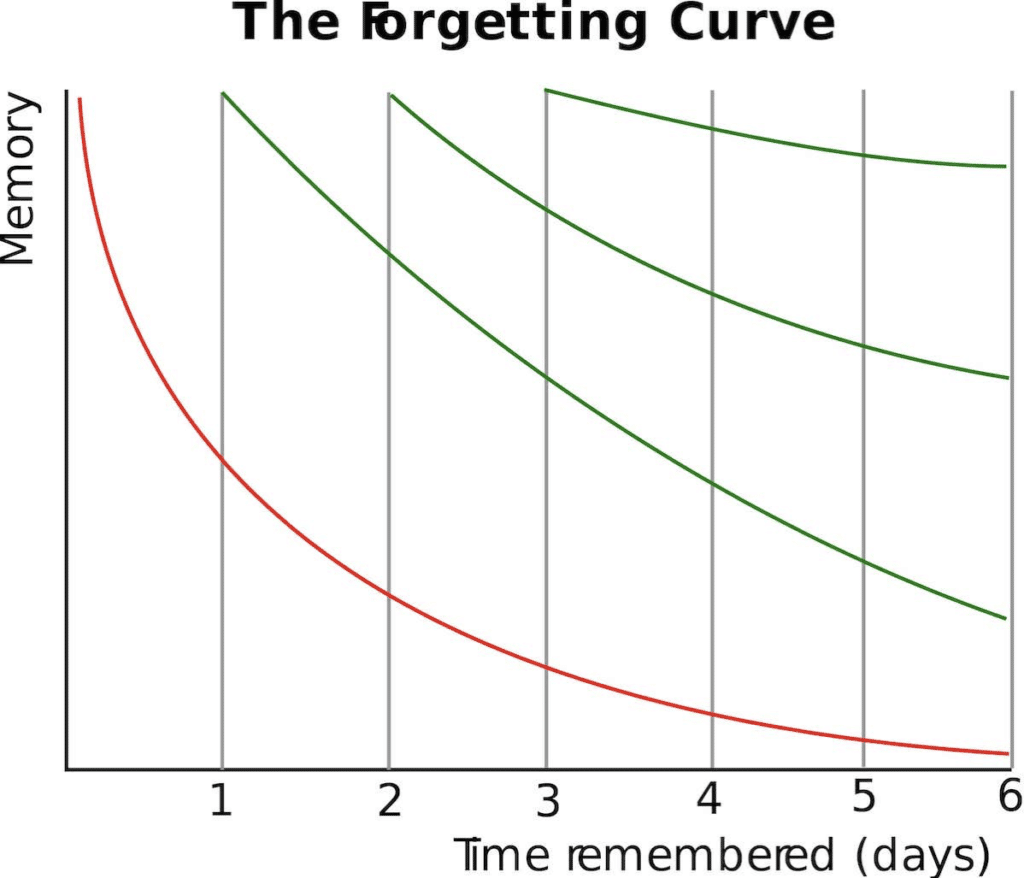
Forgetting Curve with Spaced Repetition by Icez via Wikipedia(9)
While we love the allure of pen & paper, digital mediums like dedicated knowledge management software are much better for storing and extracting information quickly.
Going digital makes sense for two reasons. First, you don’t want to spend too much time overthinking the process and hacking different tools together. This is pure productivity porn. Second, you’ll be collecting loads of information so speed is critical.
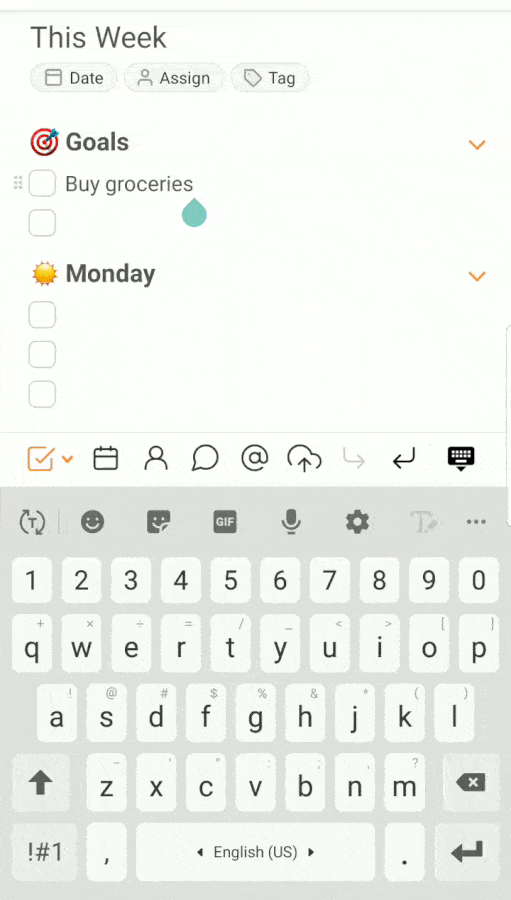
Capturing information on the go
using Taskade’s mobile app
Of course, you don’t want to copy quotes or entire passages verbatim. Rewriting in your own words (more on that in a bit) or using a shorthand-like system is much more effective. Bullet Journal signifiers are a perfect example of note-taking efficiency. 👇
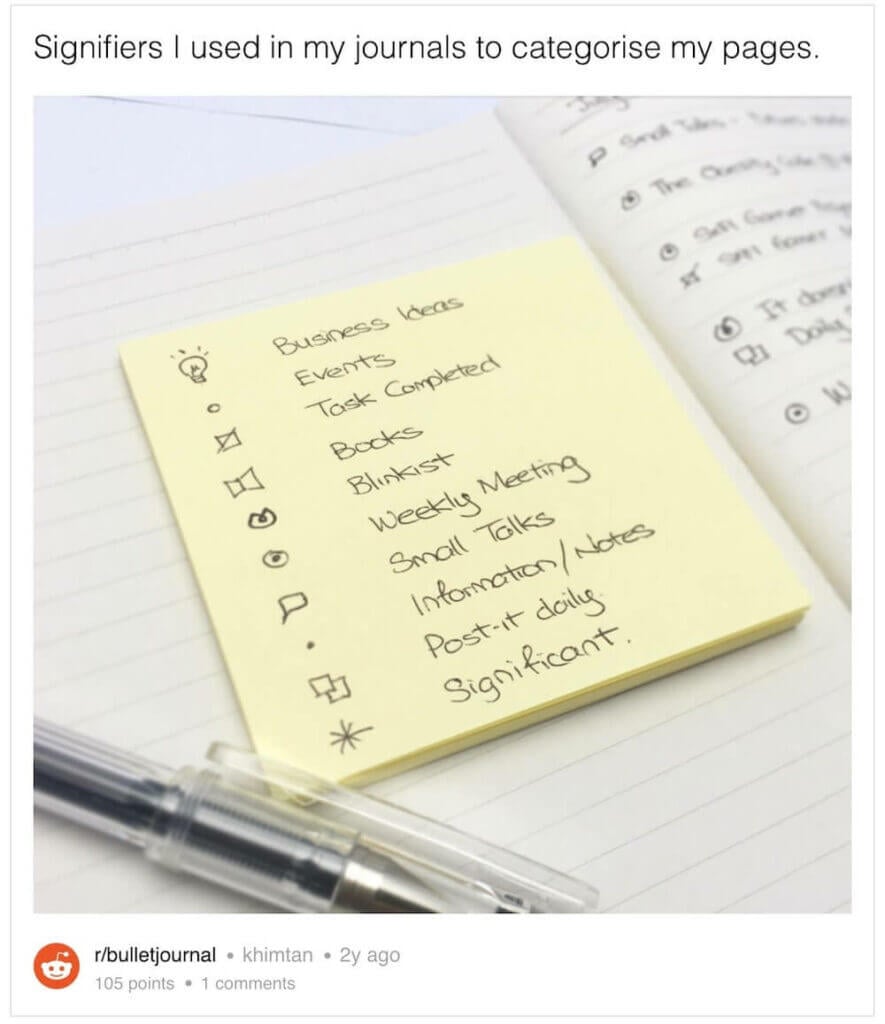
You can achieve the same effect by using an outlining tool. Outliners let you take notes in a highly organized, hierarchical manner. You can read more about outlining here.
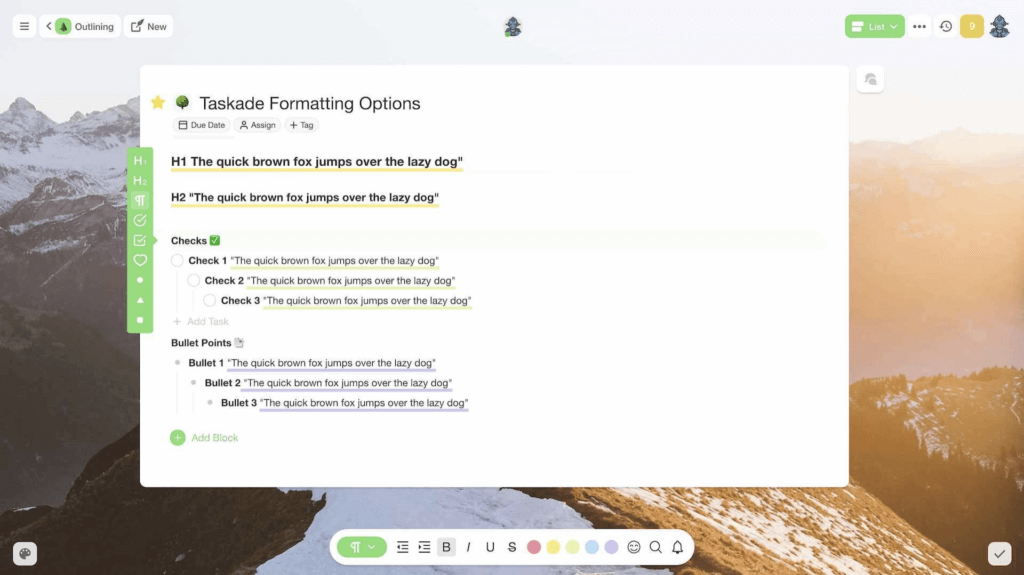
Taskade formatting options/signifiers let you quickly capture and organize information
Oh, and don’t forget to back up your knowledge management system! Opt for a centralized, unified solution with real-time cloud syncing across desktop and mobile devices. Just in case you want to review your notes on the go.
Step 3: Process, Curate, Repurpose
Despite modest upbringing, Ben Franklin became of the most important figures in American history. But before Franklin helped pen the Declaration of Independence, he had polished his writing by imitating others.
Franklin would read newspaper articles, take detailed notes, and attempt to rewrite the passages in his own words in order to improve his writing style. Here’s how he described the process in his autobiography. 👇
“[…] I took some of the papers, and, making short hints of the sentiment in each sentence laid them by a few days, and then, without looking at the book, try’d to compleat the papers again, by expressing each hinted sentiment at length, and as fully as it had been expressed before, in any suitable words that should come hand. Then I compared my Spectator with the original, discovered some of my faults, and corrected them.”
The Autobiography of Benjamin Franklin(10)
Following Franklin’s imitation technique, rewriting and repurposing the contents of your knowledge management system should become your key PKM habit. It’ll also prevent your knowledge from going stale over time.
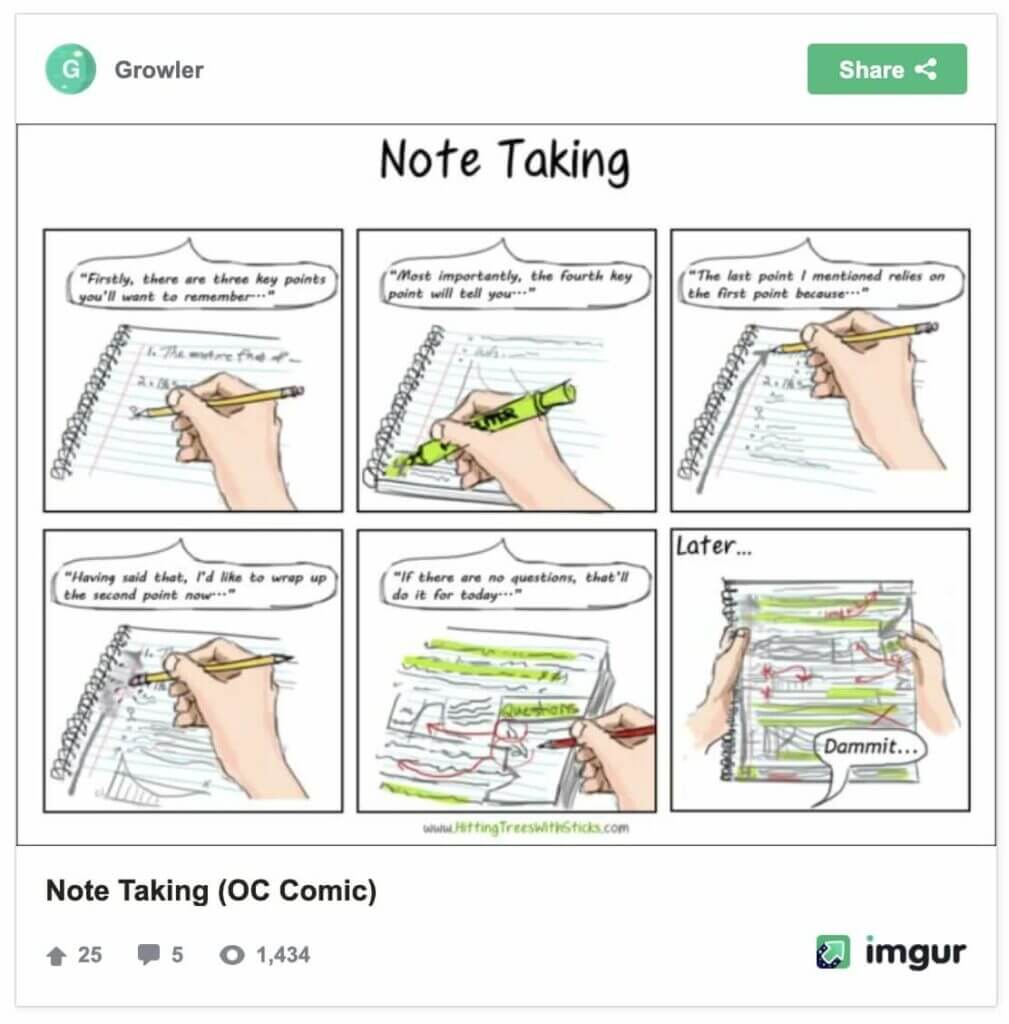
As part of the BASB methodology, Tiago Forte recommends what he calls “progressive summarization.” Whenever you add something to your system, revisit the piece of information after a day or two and try to compress it down to the juiciest details. Get rid of the fluff and expose key facts, dates, hints, and observations.
“You save only the best excerpts from whatever you’re reading, and then create a summary of those excerpts, and then a summary of that summary, distilling the essence of the content at each stage.”
”Building a Second Brain: An Overview,” Forte Labs(11)
After several rounds of revisions, you’ll be left with essential information, written in your own words and interconnected with other bits of information in your personal knowledge management system.
👋 Parting Words
Personal knowledge management is like compound interest. It takes time and consistent investment before it starts generating benefits. But the effort is well worth it in the long run.
And the best part? The 3-step process is universal for everyone:
- 🤔 Decide what you want to learn
- 📥 Capture everything in one place
- ⚙️ Process, curate, and repurpose
Taskade is a modern outlining app that lets you take notes in a minimalist and aesthetic way. You can create beautiful and functional outlines, organize your notes, and even manage tasks and projects while collaborating with others in real time.
🤖 Custom AI Agents: Create and train AI agents to curate and manage your personal knowledge database in the background.
🪄 AI Generator: Generate summaries, mind maps, and other workflows in seconds. Describe what you’re working on and let AI handle the rest.
✏️ AI Assistant: Integrate new information into your knowledge base with smart writing suggestions and AI-powered content generation.
🗂️ AI Prompt Templates Library: Explore hundreds of AI prompts designed to support knowledge capture, organization, and retrieval.
And much more…
Check our pricing page for a full breakdown of features. ⚒️
Frequently Asked Questions About Personal Knowledge Management (PKM)
How to do Personal Knowledge Management?
Personal Knowledge Management (PKM) is about organizing and managing your own information. Start by collecting information that matters to you, like notes, articles, and ideas. Use tools like Taskade, Notion, or Evernote to store and organize this information. Regularly review and update your knowledge base. Share your insights with others to reinforce what you’ve learned.
What is the difference between PKM and PIM?
PKM (Personal Knowledge Management) focuses on managing your knowledge and learning process. It involves capturing, organizing, and sharing personal and professional insights. PIM (Personal Information Management), on the other hand, deals with managing everyday data like contacts, calendars, and emails. PKM is about deeper understanding, while PIM is about staying organized.
Is Personal Knowledge Management worth it?
Absolutely, PKM is worth it. It helps you make sense of the vast amounts of information you encounter daily. By organizing and reflecting on what you learn, you become more knowledgeable and efficient. It boosts productivity and fosters continuous personal and professional growth. Plus, it makes finding information easier when you need it.
What are the 5 C’s of Personal Knowledge Management?
The 5 C’s of Personal Knowledge Management are: Collect, Capture, Curate, Create, and Collaborate. Collect relevant information. Capture insights and ideas. Curate your knowledge by organizing and updating it. Create new content by synthesizing your knowledge. Collaborate with others to share and expand your understanding.
What is PKM software?
PKM software helps you manage and organize your knowledge. Tools like Taskade, Notion, and Obsidian are popular choices. They allow you to capture notes, organize information, and track your learning progress. These tools offer features like tagging, linking, and search to make managing knowledge easier.
Is PKM still in use?
Yes, PKM is very much still in use. In our information-rich world, managing personal knowledge is more important than ever. People use various tools and techniques to keep track of their learning and insights. PKM helps in navigating and making sense of the constant flow of information we encounter.
Why is personal knowledge management important?
Personal Knowledge Management is important because it helps you stay organized and make the most of the information you encounter. It fosters continuous learning and personal growth. PKM enables you to retain and apply knowledge effectively, making you more productive and knowledgeable in your personal and professional life.
🔗 Resources
- https://en.wikipedia.org/wiki/Personal_knowledge_management
- https://researchguides.library.tufts.edu/PKM
- https://library.harvard.edu/collections/reading-harvard-views-readers-readership-and-reading-history
- https://www.theatlantic.com/technology/archive/2012/01/commonplace-books-the-tumblrs-of-an-earlier-era/251811/
- https://sites.utexas.edu/ransomcentermagazine/2015/06/09/social-media-nothing-new-commonplace-books-as-predecessor-to-pinterest/
- https://niklas-luhmann-archiv.de/
- https://austinkleon.com/steal/
- https://en.wikipedia.org/wiki/Zettelkasten#/media/File:Zettelkasten_paper_schematic.png
- https://en.wikipedia.org/wiki/Forgetting_curve#/media/File:ForgettingCurve.svg
- https://www.gutenberg.org/ebooks/148
- https://fortelabs.co/blog/basboverview/



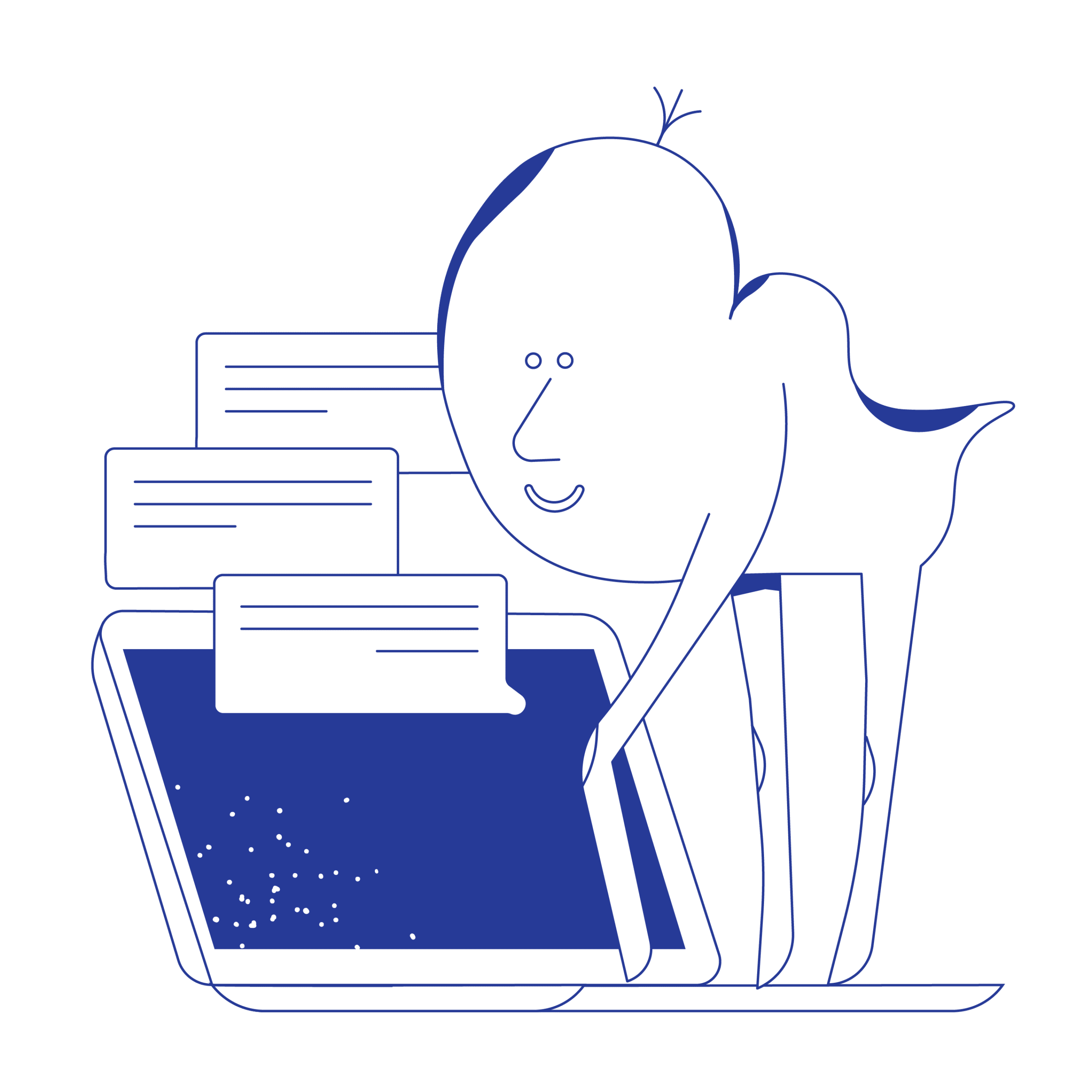 The History of Keyboard Shortcuts: A Hidden Superpower for Productivity
The History of Keyboard Shortcuts: A Hidden Superpower for Productivity 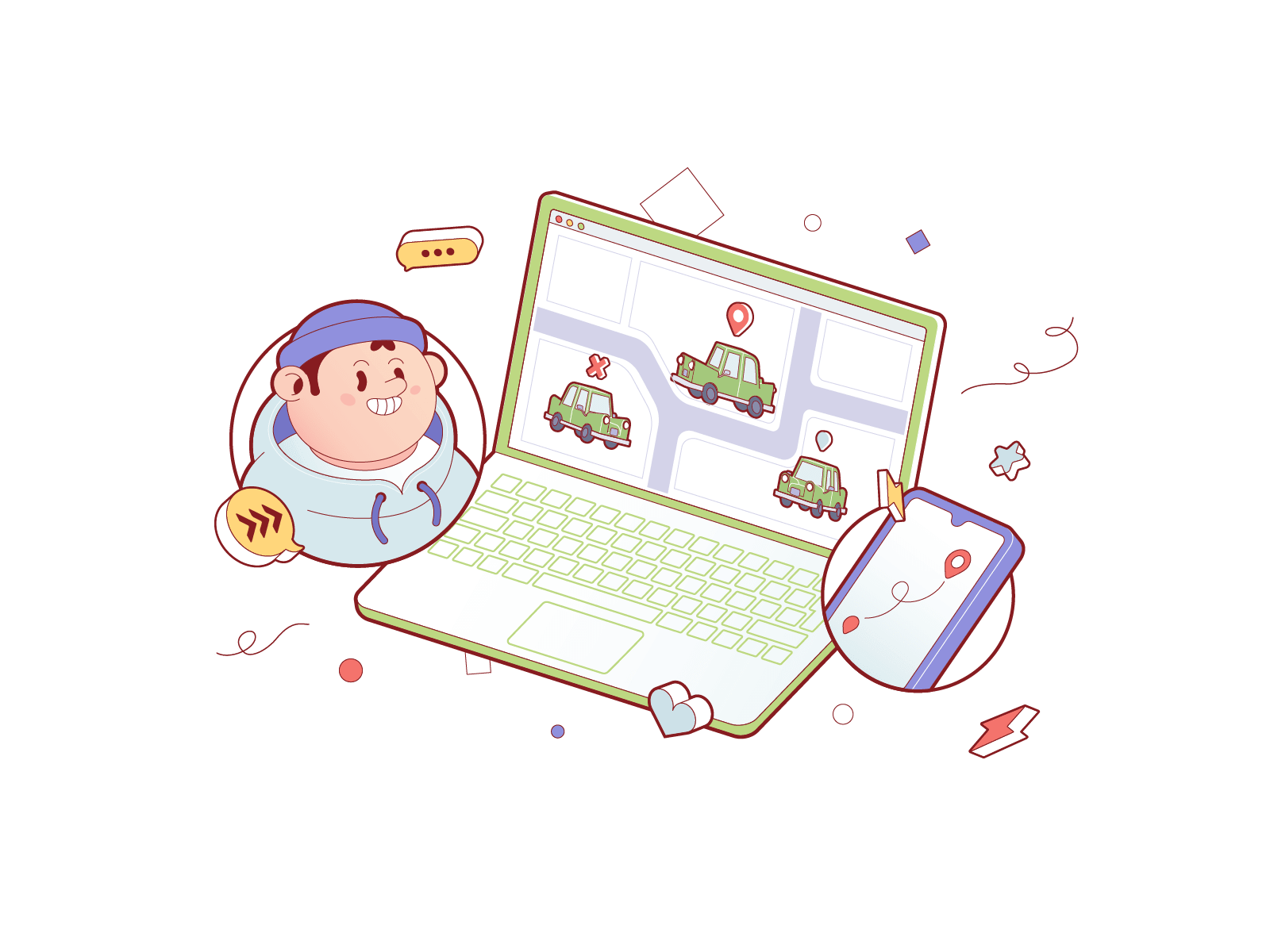 Ethical Anti-Design: The Road to No-Nonsense Productivity
Ethical Anti-Design: The Road to No-Nonsense Productivity  Seeking Balance and Tranquility: How to Manage and Beat Distractions at Home
Seeking Balance and Tranquility: How to Manage and Beat Distractions at Home  The Art of User Interface Design: Gaming and Productivity Tools
The Art of User Interface Design: Gaming and Productivity Tools  Creativity and Originality Fuels Productivity
Creativity and Originality Fuels Productivity 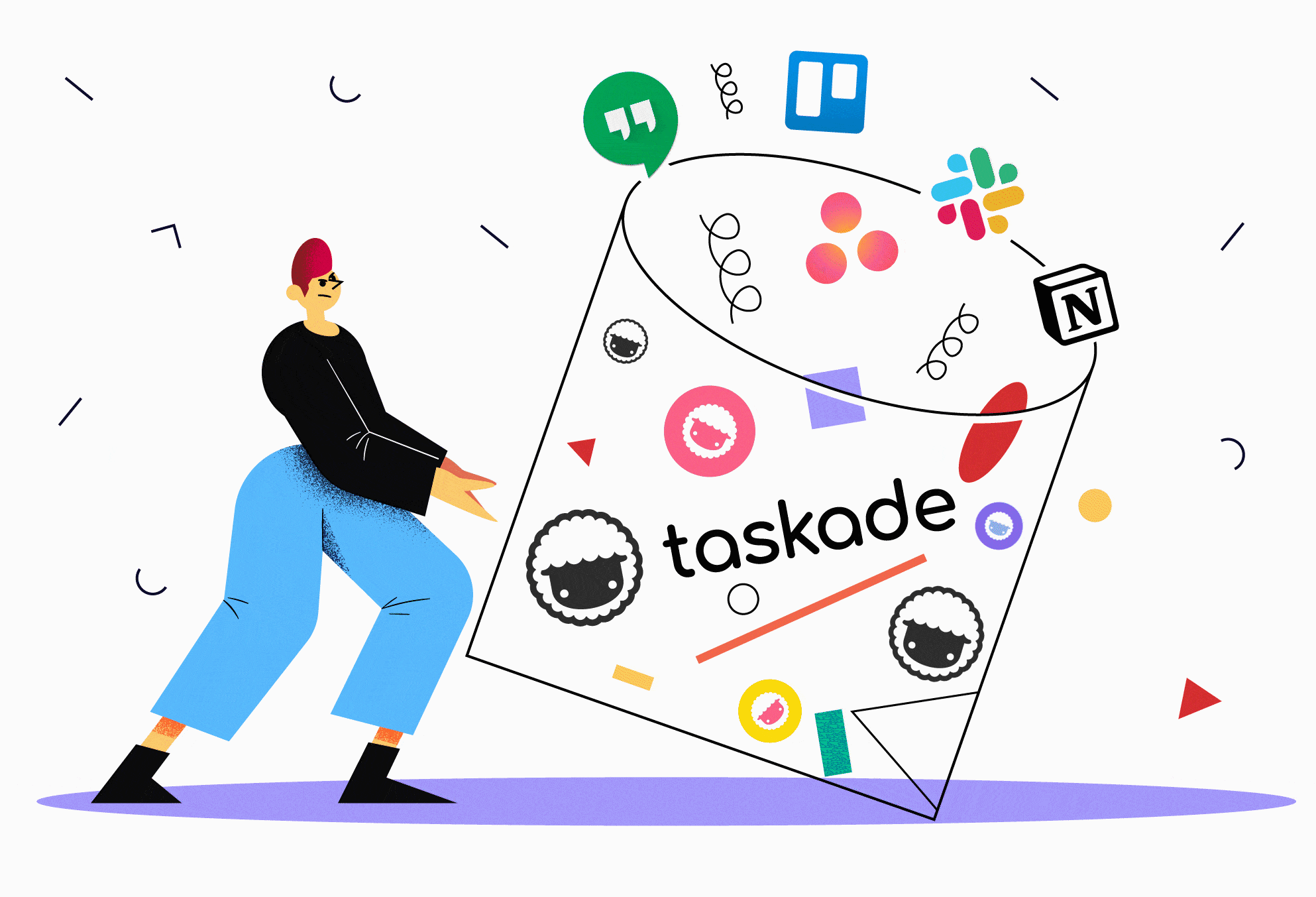 The Re-Birth Of Remote Team Productivity
The Re-Birth Of Remote Team Productivity